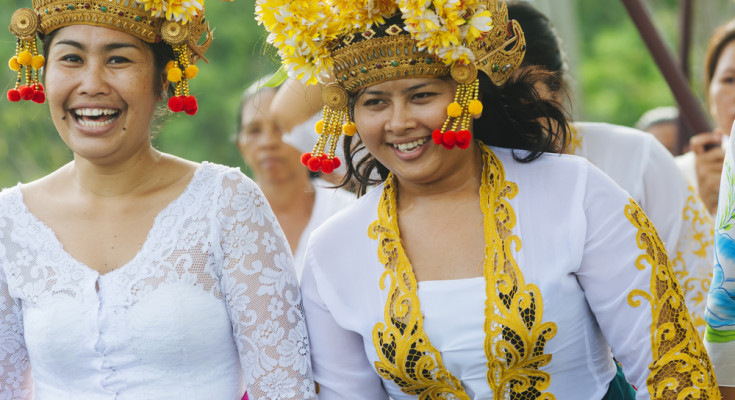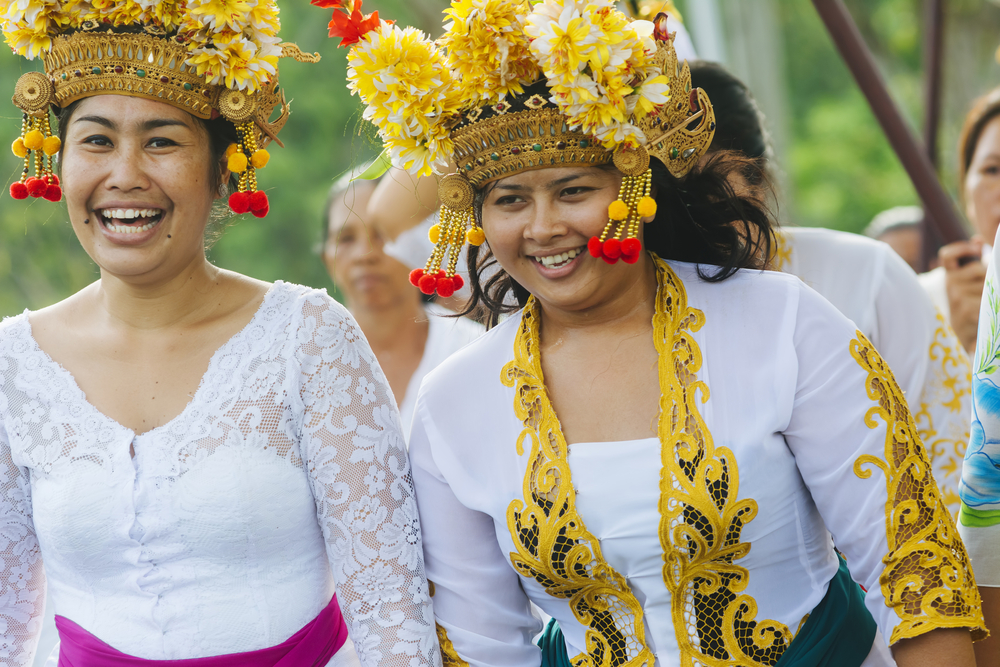By: Degung Santikarma
|
Being a tourist can be a tiring business. An average itinerary includes getting up early to catch the free buffet breakfast, rushing off to see some sights, shopping for a few souvenirs, eating, swimming some laps or surfing some waves, visiting a museum/monument/temple, running off to catch the sunset, writing postcards, go online, rechecking the guidebook, then taking in a dance performance/disco/pub crawl before catching a couple hours of sleep and then starting all over again. The pressure to pack as much as possible into one’s vacation may be especially intense in Bali. For the majority of visitors it’s a long, expensive trip, and if all one wants to do is lie on the beach, eyes closed, it’s hard to justify the effort and the outlay. Not only that, Bali is too full of unusual cultural and natural attractions to waste valuable travel time on relaxation. After all, could you really say you’d seen Bali if you’d never been to Besakih Temple (or, for those with a slightly different agenda, the Hard Rock Café, the Galleria Mall or the beachfront camel ride)? And when on one tiny island you can find everything from an elephant park to bungee jumps to karaoke bars to cultural performances, could you really stand to stay cooped up in a hotel cage-no matter how lavish and luxurious it might be? But as the tourists are rushing to fill their free time with as many sights, souvenirs and snapshots as possible-to amass some kind of proof that they really ‘did’ Bali-most Balinese are operating with an altogether unique idea of time. In the Balinese language, there is no word for ‘vacation.’ Certainly there are endless holidays, but these usually involve less lounging around than extra hard work. Most ‘days off’ require waking up in the dark to start a long day of cooking, offering making and temple attendance. Indeed, rather than separating ‘leisure’ from ‘labor’ as distinct categories, Balinese tend to blend the two together into a work pace that-while often infuriating to impatient Westerners-is quite pleasant for those involved. For example, a Westerner faced with the daunting task of making 479 palm leaf-and-flower offerings would probably get started at nine in the morning, work non-stop until two, and then spend the afternoon and evening forgetting the drudgery with a few drinks, a long dinner, and a bout of vacant staring at the television. Balinese will get started at the crack of dawn and not finish until sundown, but they’ll have used the time not only to work but to watch a half a dozen Hindi movies, delouse their hair and gossip about virtually everyone in the village. The rhythms of the Balinese agricultural and ceremonial calendars also mean that loads will be heavy or light depending on the season. If it’s harvest time or the run-up to a temple anniversary, it’s constant labor. But if it’s an ordinary day, there’s always a chance for some serious fun. In fact, Balinese have perfected a range of pastimes to make the hours pass during the down times. Gambling, gossip and snoozing are perennial favorites, as are a range of self-care activities, including nose-picking, pimple-squeezing, plucking out the hairs on one’s chin and rubbing one’s palms across one’s chest, arms and neck to exfoliate the build-up of grime. Chickens also figure prominently in Balinese recreation, providing sport in the form of cockfighting and pleasure in the form of a feather used to scratch and probe one’s ear canal. Massaging and stroking one’s fighting bird not only is soothing, it offers a handy excuse for squatting on the edge of the road to watch the traffic go by. Dutch colonialists with little spirit for slouching took such practices as evidence of the inherently lazy nature of the Balinese native. But after all, what makes more sense: working to have fun or having fun while you work? First published in Latitudes Magazine |














